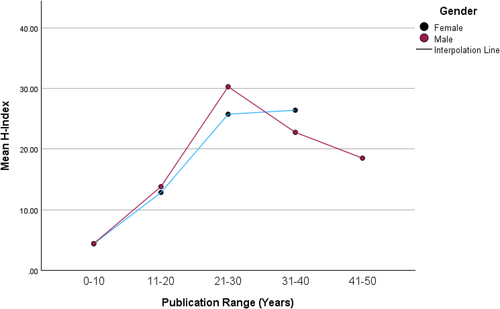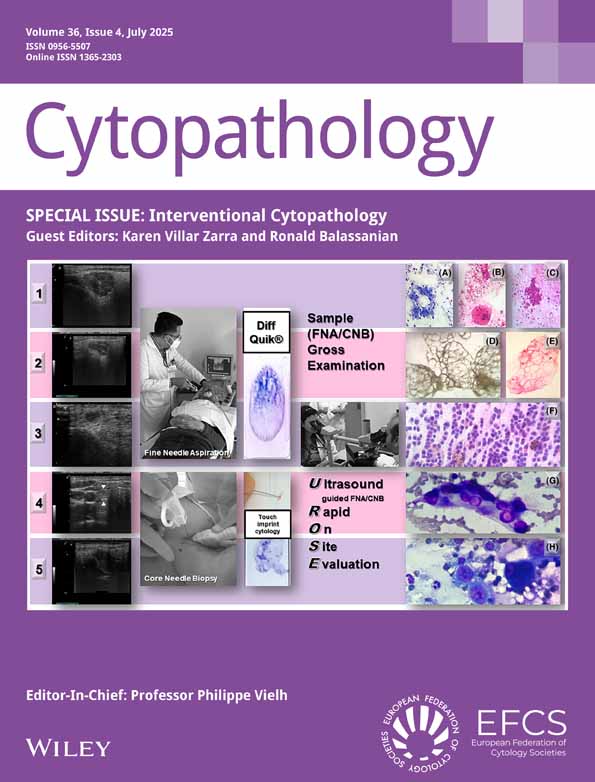Investigating Career Advancement in Academic Cytopathology Workforce: A Gender and Regional Comparison
Funding: The authors received no specific funding for this work.
ABSTRACT
Objective
Using bibliometric analysis to inform factors impacting career mobility, focusing on gender and regional variations in academic cytopathology.
Methods
The Scopus database was used to determine the productivity and experience of cytopathologists who are faculty from the 92 fellowship programs. The dependent variable was promotion to the rank of Professor. A regression analysis was conducted with productivity (h-index), experience (years in publication) and one's geographic work location as covariates to investigate the role of gender in promotion.
Results
The gender distribution is skewed towards females at the Assistant (62.4% vs. 37.58%) and Associate Professors (70.51% vs. 29.49%) levels, but the gap narrows at the full-professor rank (52.98% vs. 47.02%). The regression model showed significant regional variation in promotion for the Southern (0.35; 95% CI, 0.16–0.79; p = 0.012) and Northeastern (0.24; 95% CI, 0.10–0.57; p = 0.001) regions compared to the West. Active years of publishing (1.18; 95% CI, 1.11–1.27; p < 0.001) and productivity (1.09; 95% CI, 1.06–1.12; p < 0.001) were factors in promotion. The mean HI productivity was comparable between the males and females in the first (4.41 for males and 4.40 for females) and the second decade (13.81 for males and 12.84 for females). However, the gap widened into the third decade (30.27 for males and 26.40 for females), suggesting potential areas for improvement.
Conclusion
While the academic cytopathology workforce is progressing towards gender equity, there is still room for improvement. Our findings suggest that focusing on mid-career professionals(between the second to third decades) by providing additional resources for research and facilitating work–life flexibility can help close the gender gap at the highest level.
Graphical Abstract
While initial research productivity was similar between genders, male cytopathologists showed a slightly faster rate of increase in the second to third decades, followed by a tapering off or decline. Female faculty exhibited a shorter maximum duration of research activity compared to males.
This bibliometric study examined factors in academic cytopathology faculty promotion, revealing a higher proportion of women in lower ranks despite gender not being a significant predictor of promotion. Promotion to full professor was influenced by regional location, publication experience and productivity. The findings suggest that targeted support for mid-career female cytopathologists, focusing on research resources and work–life balance, could further address the observed differences in gender distribution at the highest academic level.
Conflicts of Interest
The authors declare no conflicts of interest.
Open Research
Data Availability Statement
The data that support the findings of this study are available from the corresponding author upon reasonable request.





